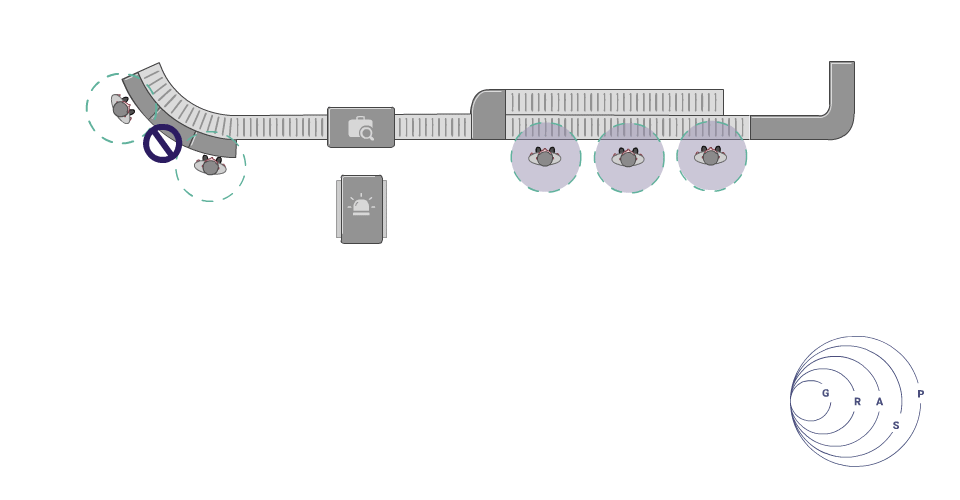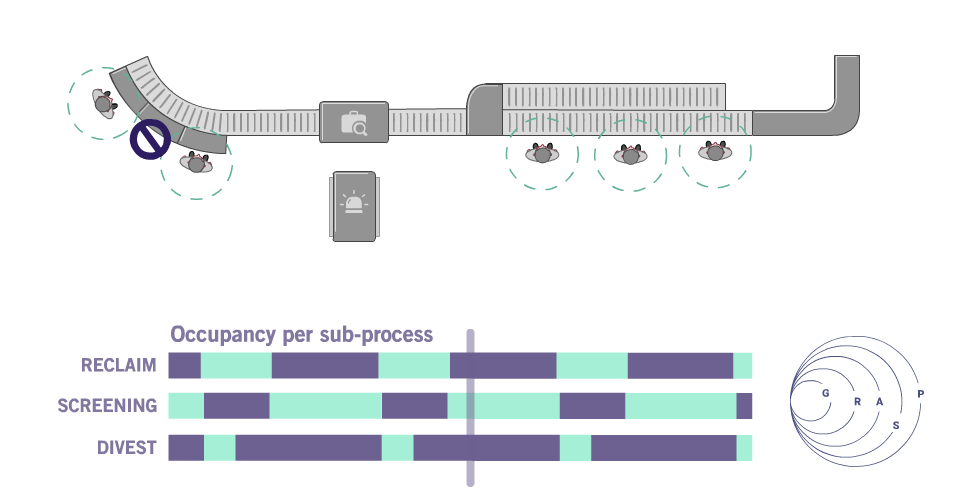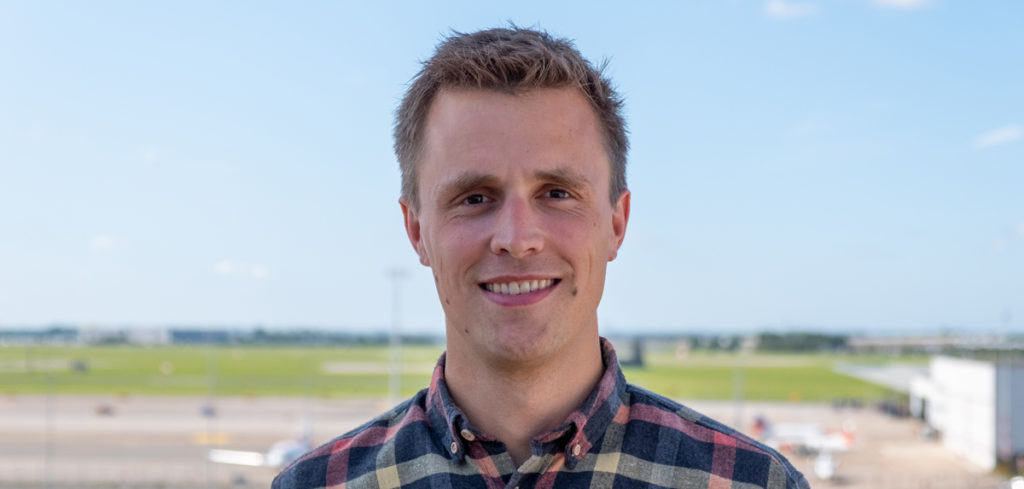Robert Schuur, co-founder of GRASP Innovations, looks at how the company’s security checkpoint management system can be used to optimize the screening checkpoint while helping to adhere to new Covid-19 measures
The airport security screening checkpoint has been cited as one of the most challenging process points in which to implement new Covid-19 measures. Typically queues build up as passengers pass through screening, which makes social distancing difficult.
GRASP Innovations, which was founded by two former aviation security consultants from Point FWD, has been dedicated to improving the aviation security checkpoint over the past few years. Its security checkpoint management system uses IR-UWB radars from its technology partner Xandar Kardian to measure how many people are in a specific area. The data is then fed into GRASP’s software platform where it is analyzed. The results are shown in live dashboards, as well as post-event analytics dashboards, to help improve the security screening process.
“Before Covid-19 we were already working on solutions to improve security,” says Robert Schuur, co-founder of GRASP Innovations. “Even though security checkpoints have improved greatly over the past few years through automation and new technologies, there are still big improvements that can be made in terms of efficiency and passenger experience. We believe that data gathering and analytics could greatly benefit the security checkpoint, especially now in the Covid-19 era.”
 GRASP’s solutions are currently being used at a major European airport and with a large hotel group with locations in three major European cities. The company is using its experience from these projects and in discussions with airports and security companies around the world to look at how the security checkpoint can be adapted to meet new Covid-19 measures, especially with regards to social distancing.
GRASP’s solutions are currently being used at a major European airport and with a large hotel group with locations in three major European cities. The company is using its experience from these projects and in discussions with airports and security companies around the world to look at how the security checkpoint can be adapted to meet new Covid-19 measures, especially with regards to social distancing.
“When Covid-19 and the resulting lockdown happened our first thoughts were about how we can add value to the industry right now,” explains Schuur. “We didn’t want to develop a short-term solution, which isn’t beneficial in the long-term. Therefore we looked at how our technology could be used to benefit airports after Covid-19 as well.
“The solution we came up with is a process change in how security checkpoints work,” he continues. “Typically passengers are ‘pushed’ through security. They are encouraged to keep moving to the next step in the process. This approach often leads to the build-up of passenger queues in the screening process and long queues in front of security. In normal circumstances this process could be improved, but now in the Covid-19 era it is even more important when airports are to adhere to new social distancing measures.”
GRASP brainstormed with some former colleagues from Point FWD and came up with the ‘pull’ approach for airport security checkpoints. “The data gathered from Xandar Kardian’s IR-UWB radars show which areas of the checkpoint are being used. This data can be used to inform security personnel when there is space in a particular security screening lane for more passengers. The security checkpoint management system can then alert the necessary people to let more passengers through this particular screening lane. This will help avoid queues and enable social distancing.”
According to Schuur, the GRASP solution can already offer this ‘pull’ process and will just need “alterations to the system to make it work effectively”. But, he notes, for it to be successful within the overall terminal, airports need to ensure that all previous and successive processes communicate with each other.
“Coordination and cooperation are extremely important,” he says. “Social distancing within the security checkpoint is feasible, but for it to work queue management needs to be monitored from when the passenger arrives at the airport right up until they board a plane. And all the different processes in-between need to be monitored and talk to each other, such as check-in, bag drop, security, immigration, etc.”
According to Schuur, aside from social distancing benefits, the ‘pull’ method can also offer improvements in security planning and throughput. “This type of solution covers a short-term problem but offers long-term benefits,” he says. “But, as mentioned before, collaboration is vital. I firmly believe that now is the time for everyone in the industry, even direct competitors, to come together to get the industry moving again. This puzzle is just too complicated to be solved by one company. We need to work together to survive.”


